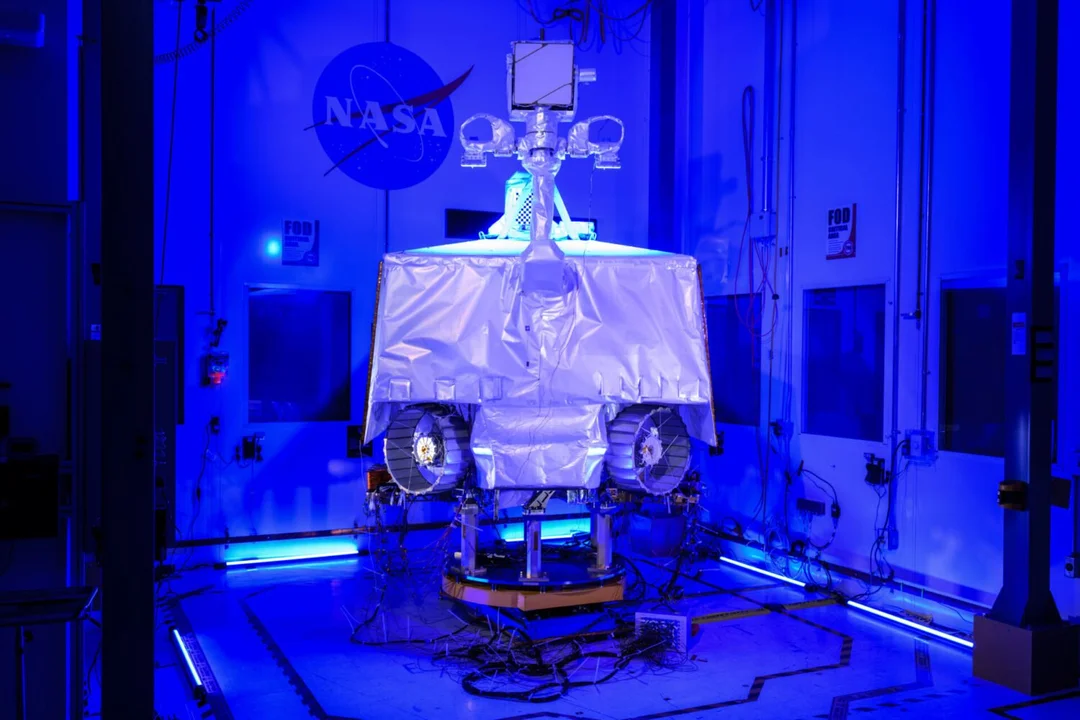
NASA’s VIPER Moon Rover Grounded: No Ride to the Lunar Surface?
NASA's Volatiles Investigating Polar Exploration Rover (VIPER), a state-of-the-art lunar rover designed to hunt for water ice at the Moon's south pole, is currently sitting idle in storage at the Johnson Space Center in Houston. This is due to NASA canceling plans to find a commercial partner to deliver it to the lunar surface, creating uncertainty about the rover's future.
Originally slated for launch in 2023, the VIPER mission faced repeated delays due to schedule constraints and supply chain issues, pushing the launch date to 2025. However, in July 2024, NASA made the surprising decision to cancel the mission altogether, citing potential disruptions to other commercial payload missions to the Moon.
Initially, NASA considered disassembling VIPER and repurposing its components for future endeavors. This sparked significant backlash from the scientific community, prompting the agency to explore alternative options. NASA then issued a call for the private sector to take over the mission, inviting companies to propose solutions for delivering the rover to the Moon. Space startups like Intuitive Machines responded, but the agency has now reversed course.

In a statement released this week, Nicky Fox, associate administrator of NASA’s Science Mission Directorate, acknowledged the efforts of those who proposed to the Lunar Volatiles Science Partnership Announcement for Partnership Proposals call, stating, "We appreciate the efforts of those who proposed... We look forward to accomplishing future volatiles science with VIPER as we continue NASA’s Moon to Mars exploration efforts."
According to SpaceNews' Jeff Foust, NASA decided to halt the solicitation after reviewing the Step 1 proposals. Joel Kearns, deputy associate administrator for exploration in NASA’s Science Mission Directorate, added, "We are considering alternative partnerships. These are different ways to structure partnership proposals based on what we learned from reviewing the Step 1 proposals... We are looking at different types of partnerships that are structured differently from what we originally envisioned to try to generate stronger proposals." He did not provide details on the alternatives or a schedule.
Industry insiders suggest the terms of the partnership as initially conceived were problematic. Companies were expected to shoulder the full cost of launching and operating VIPER without any financial contribution from NASA, while NASA would retain all the collected data for unrestricted distribution. This made it exceptionally difficult for companies to develop a viable business model to even break even on the mission. Steve Altemus, chief executive of Intuitive Machines, expressed these concerns in a March 24 earnings call.
With NASA already investing $450 million in VIPER's development, the agency has stated it won't allocate any further funds for the rover's lunar delivery. This severely limits NASA's options for getting VIPER to the Moon without private sector collaboration.
The situation has drawn criticism from members of Congress, including Rep. Zoe Lofgren (D-Calif.), who expressed dissatisfaction with NASA's responses regarding the VIPER cancellation.
What does the future hold for VIPER? Will NASA devise a new strategy to get its lunar rover on the Moon, or will the agency change the mission?
Share your thoughts and opinions in the comments below!